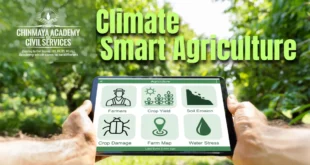- Till the onset of the green revolution, millets used to be staple food for many communities in India.
- They were 25% of the staple food supply in the early 1970s.
- However, the green revolution technology and policy environment gave rice and wheat a strong advantage over millets.
- This led to neglect of millets and their decline in all respects.
- Consumer bias against millet was built in the terminology which designated rice and wheat as fine or superior cereals and millets as coarse or inferior cereals.
- Consequently, millet share in total cereal intake in the country declined from 25% at the beginning of the green revolution to less than 6% in recent years.
- On a per capita basis, millet supply dropped from 35 kg a year to 13 kg over the last five decades.
- Millets are nutrient-dense: Scientific evidence shows that millets reduce the following:
Iron deficiency anaemia,
● Risk of type II diabetes,
● BMI and obesity,
● Calcium deficiency, and helps with hyperlipidaemia. - Millets are also found to help overcome malnutrition. Within millets, minor millets are even more nutritious and healthy.
More adaptable to harsh conditions:
- The steep fall in availability of millets in the country has reduced dietary diversity of staple foods and has serious implications for nutrition and health.
- It also impacts resilience and sustainable use of natural resources as nature has blessed millets with several traits and qualities that are highly beneficial for both mankind and nature.
- Millets are the least water demanding crops, they thrive in harsh environments and withstand various biotic and abiotic stresses like rise in temperature, drought etc.
- There is a renewed interest in millets as the awareness about their health and nutrition benefits has spread in the last decade along with the realisation of consequences of restricting staple food intake to rice and wheat.
Disconnect between policy and output
- Government of India and some states have taken some initiatives since 2012 to promote millets.
- Millets were officially declared as Nutri Cereals in 2018 which was declared as the National Year of Millets.
- India has also brought millets on the global scene by getting UNGA to declare the year 2023 as an International Year of Millet.
- Despite all these efforts, there is no sign of an increase in millet production.
- The increased awareness about nutrition value of millets, without an increase in production, has simply shifted millets from the bowl of poor and low-income households to plate of middle and high-income groups.
- At the same time, average millet intake in the country’s still declining.
- NSSO’s consumer expenditure survey shows that the bottom 25% of households consumed 1. 59 kg millets/ month per capita which was the highest among all expenditure classes in 1993-94. By 2011-12, it declined to 0. 27 kg, which was the lowest among all expenditure classes.
- The budget presented on February 1, 2023, is a timely and serious attempt to mainstream millets, increase their consumption as well as production in India and also at global level.
- The budget has put millets on a respectable pedestal by designating them as “Shree Anna”.
- Therefore, utmost emphasis needs to be given to expand area under millet and increase their productivity by making them attractive to the producers.
India needs to lead R&D effort
- The budget has announced support for R&D in millets through a centre of excellence to be set up in Indian Institute of Millets Research, Hyderabad.
- Unlike rice and wheat, where technological breakthrough was and is facilitated by international agricultural research institutes, the onus for technology development in millets rests on India.
- About 40% millets, other than sorghum, are produced in India and 44% in the continent of Africa which hardly has capacity for R&D in agriculture.
- Millets require processing before use which is quite complex and difficult.
- Millet specific machines and equipment need to be developed to handle large scale production.
- Producers need to be empowered through FPOs, SHGs and cooperatives to take advantage of rising consumer preference and willingness to pay better prices for millets.
- This will require millet value chains with participation of millet producers.
SOURCE: THE HINDU, THE ECONOMIC TIMES, PIB
 Chinmaya IAS Academy – Current Affairs Chinmaya IAS Academy – Current Affairs
Chinmaya IAS Academy – Current Affairs Chinmaya IAS Academy – Current Affairs



